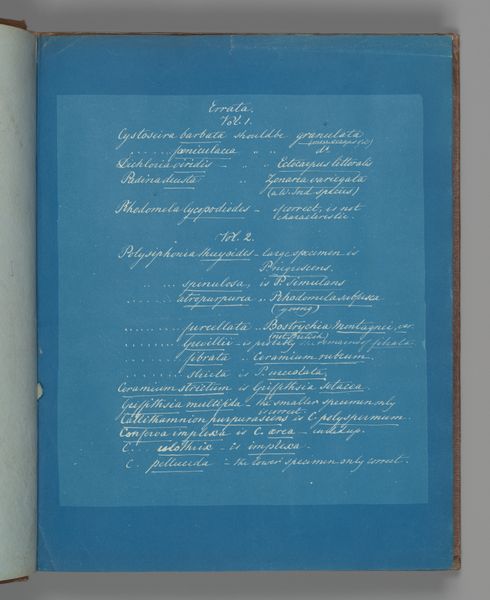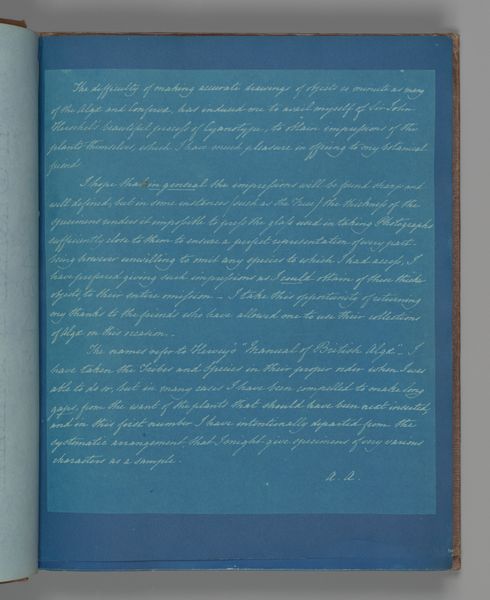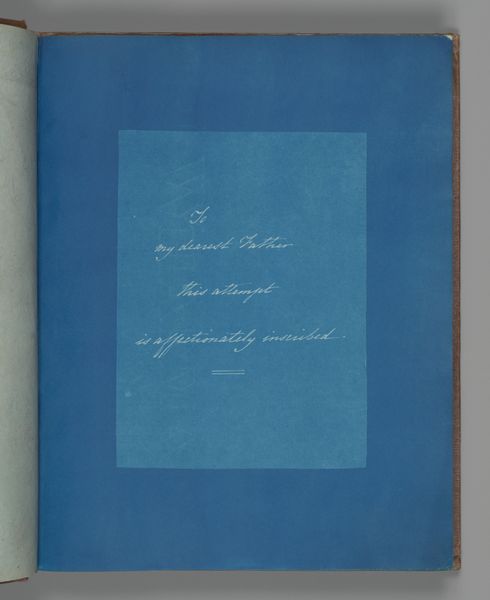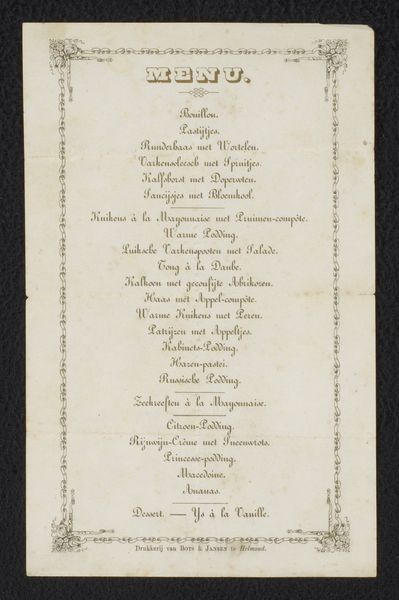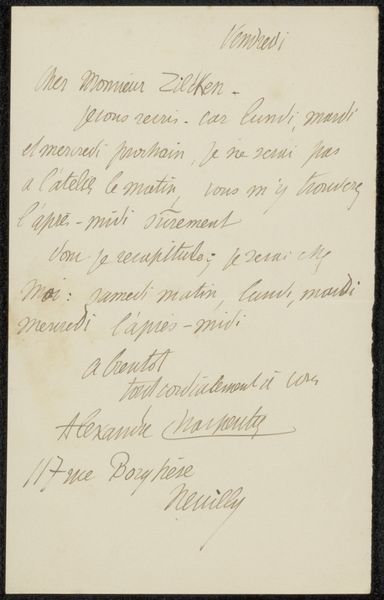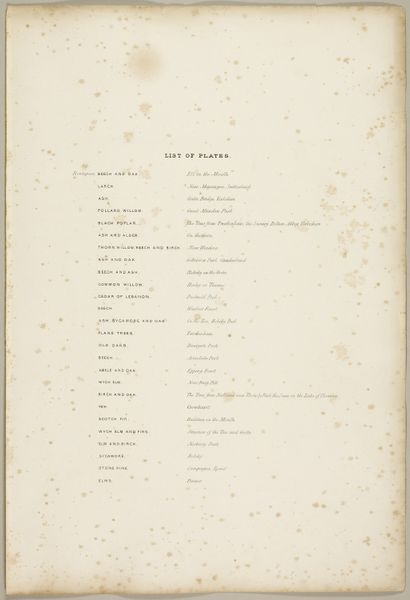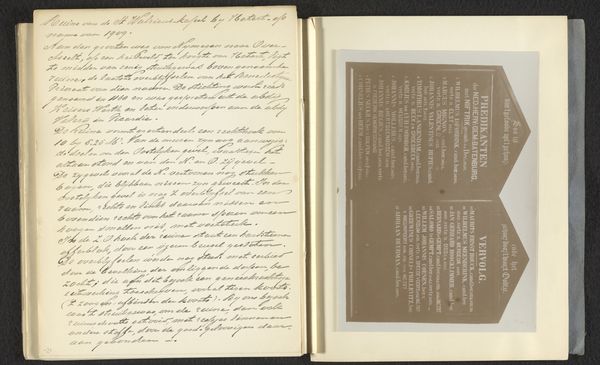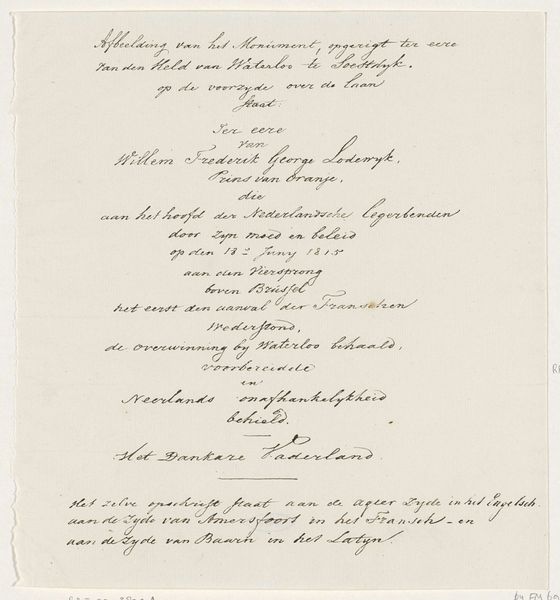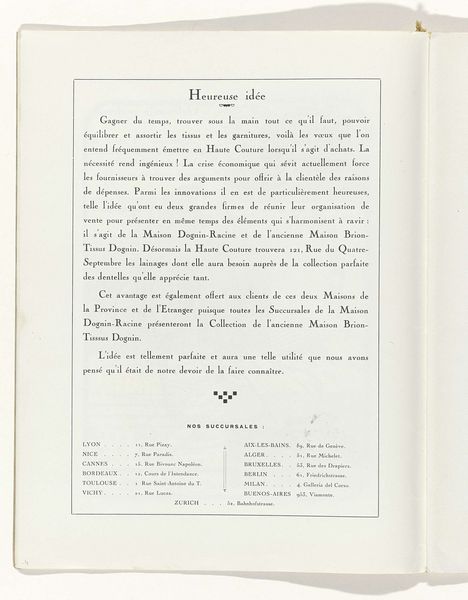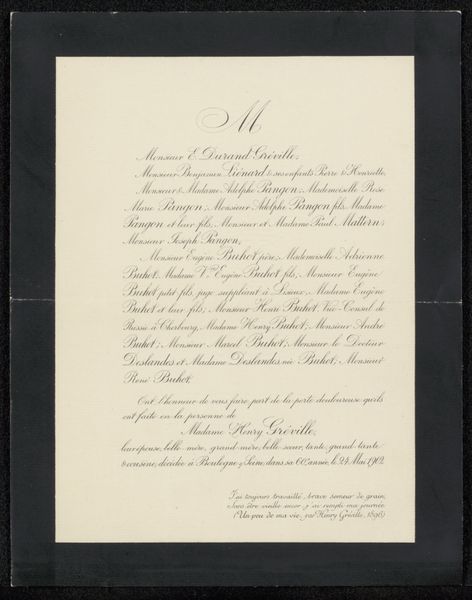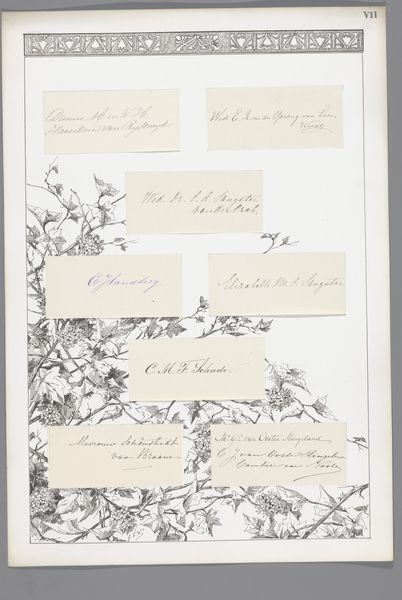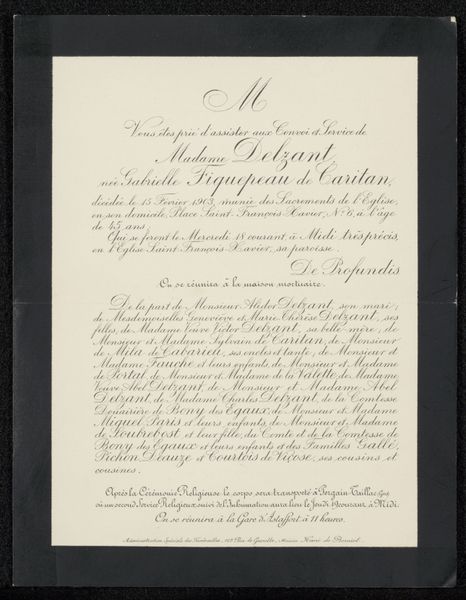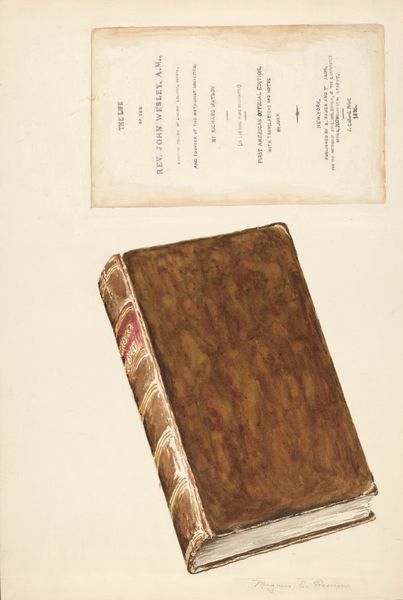
print, paper, photography, albumen-print
# print
#
paper
#
photography
#
albumen-print
Dimensions: Image: 25.3 x 20 cm (9 15/16 x 7 7/8 in.)
Copyright: Public Domain
Curator: Today, we’re examining a page from Anna Atkins' "Appendix," created between 1851 and 1855. This striking cyanotype album is held at the Metropolitan Museum of Art. It is actually one of the first books using photography to illustrate scientific data. Editor: Wow, the striking blue hue immediately grabs attention. It reminds me of old blueprints. But I am puzzled by its apparent flat appearance. Are those handwriting characters directly laid onto that page? Curator: Yes! Atkins directly contacted light-sensitive paper with algae specimens. The text is printed from transparent tracing paper laid with handwriting. Each page becomes an unique arrangement. I'm fascinated by the directness of the process and the democratizing effect of making photography accessible. Editor: Fascinating. So the production hinges on the availability of these algae and the preparation of specific chemicals? Was this type of work considered 'art' at the time or just a form of visual recording for science? I suppose that depends also on if her peers see such productions. Curator: It’s more complex than that. She wasn't just passively recording. Atkins meticulously arranged specimens and chose this cameraless process deliberately to give access for many scholars. And I think Atkins, due to her wealthy upbringing, deliberately rejected art academia to perform work through material. I would say it directly challenges those art establishments! Editor: It sounds as if the art establishments' loss is knowledge seekers' gain. She certainly understood the power of visual information and was adept at wielding its powers! She understood who her viewers were! Curator: Precisely. For Atkins, her vision enabled many botanists at the time with visual records. I have the opinion she thought of that as her goal: visual accessibility of all kinds of specimens from nature. Editor: Thank you for highlighting the intersection of historical data, manual effort, accessibility, and production value that is inherent in the "Appendix". I'm newly persuaded that scientific visualization is so often underestimated by those from visual art backgrounds. Curator: Thank you as well for your observation! The ability for a woman to impact this field with such tools is something that is a valuable piece to preserve, study, and view over and over again.
Comments
No comments
Be the first to comment and join the conversation on the ultimate creative platform.
